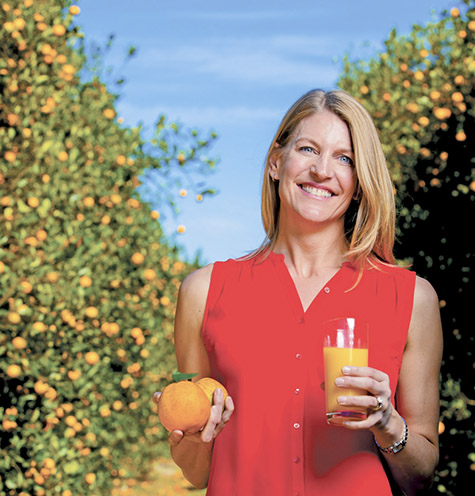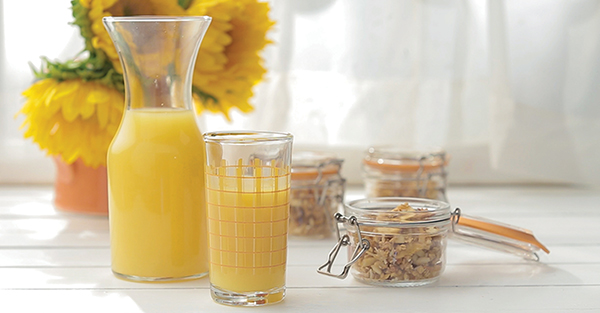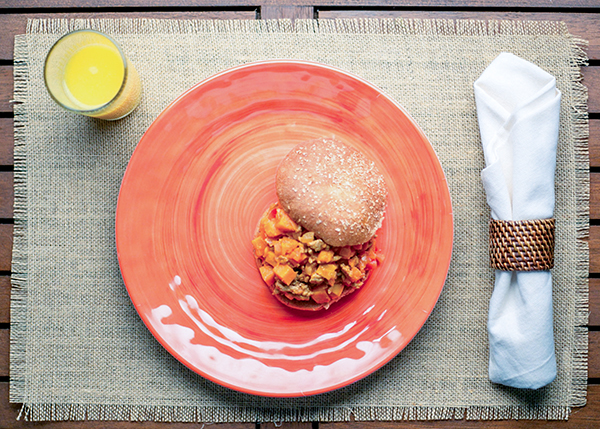Make Kitchen Time Easier
(Family Features) Throughout 2018, you can create easy, healthy and delicious family meals by using time-saving recipes.
For example, these “Cook Once, Eat Twice” recipes from CanolaInfo start with pork chops that double as the base for lunch or dinner the following day.
“The more you cook your own meals, the more you can control portion sizes and ingredients,” said Manuel Villacorta, registered dietitian. “Knowing the right oil to use is essential. I like using canola oil to keep the flavors of your dishes intact due to its neutral taste and light texture. Plus, it contains high levels of monounsaturated fat and plant-based omega 3 fat, and is low in saturated fat. I use it regularly in my home kitchen and recommend it to my clients.”
For more time-saving recipes, visit canolainfo.org.

Pork Loin Chops with Sweet Balsamic Mushrooms
Servings: 8
- 8 boneless center-cut pork loin chops (4 ounces each), trimmed of fat
- 1/2 teaspoon ground black pepper
- 2 tablespoons canola oil, divided
- 12 ounces sliced portobello mushrooms
- 2 garlic cloves, minced
- 1/2 teaspoon salt, divided
- 2 tablespoons balsamic vinegar
- 2 tablespoons water
- 2 teaspoons Worcestershire sauce
- 1 teaspoon sugar
- 2 tablespoons chopped green onions
- Sprinkle both sides of pork with pepper.
- In large skillet over medium-high heat, heat 1 tablespoon canola oil. Cook pork chops 4 minutes on each side, or until internal temperature reaches 160 F.
- Reserve four pork chops in refrigerator to make Pressed Pepperoncini-Pork Sandwiches.
- In skillet over medium-high heat, heat remaining canola oil; tilt skillet to coat bottom lightly. Cook mushrooms 4-5 minutes, or until tender and juices begin to release, stirring occasionally. Stir in garlic and 1/4 teaspoon salt; cook 15 seconds, stirring constantly. Place over pork chops; cover to keep warm.
- To pan residue, add vinegar, water, Worcestershire sauce, sugar and remaining salt. Bring to boil over medium-high heat and boil 1 1/2-2 minutes, or until reduced to 2 tablespoons, scraping bottom and sides of skillet. Drizzle sauce over pork and mushrooms. Sprinkle with onions.

Pressed Pepperoncini-Pork Sandwiches
Servings: 4
- 12 ounces crusty French bread, unsliced
- 4 leftover pork chops from Pork Loin Chops with Sweet Balsamic Mushrooms recipe
- 2/3 cup pepperoncini slices
- 1 plum tomato, chopped
- 1/4 cup finely chopped red onion
- 2 garlic cloves, minced
- 1 1/2 tablespoons canola oil
- 1 1/2 tablespoons cider vinegar
- 1 1/2 teaspoons dried oregano
- 1/4 teaspoon dried pepper flakes
- 3 slices ultra-thin sliced Swiss cheese, cut in half
- Hollow out top and bottom halves of bread, leaving 1/2-inch thick shell.
- Place pork on bottom half of bread. In bowl, combine pepperoncini, tomato, onion, garlic, canola oil, vinegar, oregano and pepper flakes. Spoon pepperoncini mixture and any accumulated juices on top of pork and top with cheese.
- Cover with top half of loaf. Press down firmly to flatten sandwich and allow flavors and juices to absorb. Cut filled loaf crosswise into four equal pieces.
Source: CanolaInfo
Natural v. Added Sugars
What does it mean for your family’s health?
(Family Features) Sugars are one of the most important health conversations today. A diet filled with too many added sugars is associated with weight gain, type 2 diabetes and heart disease. According to the 2005-2010 National Health and Nutrition Examination Survey, the average American consumes an average of 20 teaspoons a day, significantly more than the 6-9 teaspoons recommended daily by the American Heart Association.
Sugar can mean different things to different people, which not only adds to the confusion, but can quickly derail even your best intentions as you try to make the right choices for your family.
The difference between added and naturally occurring sugars
Many nourishing foods such as fruits, vegetables, certain whole grains and dairy products contain what are known as naturally occurring sugars; these are simple carbohydrates that are naturally present in a food’s biological structure. For example, the lactose found in milk is a sugar, as is the fructose in fruit.
In contrast, added sugars are those sugars or sweeteners you add in your kitchen – adding sugar or honey to a recipe or onto your breakfast cereal, for example – as well as sugars and sweeteners that are added to a variety of products by food manufacturers. Added sugars are often used to enhance taste and flavor, of course, but can also be included for other reasons, such as to prevent spoiling – think summer jams – or assist in fermentation, such as in baking.

“Working with the Florida Department of Citrus, I’ve seen firsthand how much confusion there is around this topic for many families,” said registered dietitian Kate Geagan, author of “Go Green Get Lean.” “Yet while too many added sugars can fill your diet with ‘empty calories,’ naturally occurring sugars are found in some of nature’s most nutrient-rich packages, delivering a bevy of benefits such as vitamins, minerals, antioxidants and more.”
An 8-ounce glass of 100 percent orange juice, for instance, has no added sugar. Beyond being an excellent source of vitamin C, it’s a good source of folate, especially important for women of childbearing age, as well as potassium, a vital mineral which helps nerves and muscles communicate and can help offset the effects of too much sodium in the diet. In fact, the FDA recently announced it will add potassium to the Nutrition Facts Panel because many Americans are falling short.
The benefits don’t stop there, though. A glass of 100 percent orange juice also delivers magnesium, vitamin A and niacin. Plus, it’s a significant source of hesperidin, an antioxidant that research suggests may have heart, blood pressure and cognition benefits, as well as reduce inflammation and oxidation. Furthermore, one glass counts as one serving (1 cup) of fruit to help you meet the 1.5-2 cups per day recommended by the Dietary Guidelines for Americans.
How much added sugar is too much?
A delicious, vibrant eating plan that you can stick with for the long haul doesn’t mean you can’t ever consume added sugar, but it is about cutting back for most Americans – especially for groups with the highest intakes, such as adolescents and men – and replacing those calories with nutrient-rich foods.
The most recent Dietary Guidelines for Americans recommend limiting added sugar intake to a maximum of 10 percent of total calories each day, or 200 calories of a 2,000 calorie diet, which matches guidelines from the World Health Organization and the American Heart Association.
Clearing up food label confusion
In May 2016, the FDA announced a revamped Nutrition Facts Panel that includes, among other improvements, clearly listing added sugars on their own line for the first time.
Up until now, both added and naturally occurring sugars have been lumped together under one “sugars” line, making it vexing for the average eater to determine how much sugar is naturally occurring versus added, especially given the dozens of different names for sweeteners that manufacturers often use. When this change hits supermarket shelves, families will be able to more easily spot foods and beverages that contain little to no added sugar.
In addition to highlighting added sugars and potassium, the Nutrition Facts Panel will now more accurately reflect serving sizes that Americans actually eat and drink. Also, packages that are reasonably consumed in a single sitting will no longer get a free ride using smaller serving sizes and listing multiple “servings” per bag, container or can.
For best results, focus on filling your diet with an abundance of naturally nutrient-rich foods and shift to a diet that includes plenty of plant foods. For more recipes using Florida orange juice, visit floridacitrus.org.

Homemade Orange Granola
Servings: 6
- 1 1/2 cups quick cooking oatmeal
- 1 cup chopped walnuts
- 1/2 cup sliced almonds
- 1/4 cup sunflower seeds or pumpkin seeds
- 1 1/2 teaspoons cinnamon
- 1 cup 100 percent Florida orange juice, divided
- 3 tablespoons canola oil
- 2 tablespoons honey
- 1 1/2 teaspoons vanilla extract
- 1/2 cup dried cranberries
- Heat oven to 325°F. Spray baking sheet with non-stick cooking spray.
- In large bowl, combine oatmeal, walnuts, almonds, sunflower seeds and cinnamon; mix well. Drizzle in 1/3 cup orange juice; stir well to evenly coat oatmeal mixture.
- Repeat twice more, stirring after each addition of orange juice.
- In small bowl, combine oil, honey and vanilla; stir well to combine. Drizzle oil mixture over oatmeal mixture; stir well to coat oatmeal mixture.
- Spread oatmeal mixture on prepared baking sheet in even layer. Bake 30 minutes, stirring every 10 minutes, to evenly brown granola.
- Remove from oven, add cranberries and cool completely. Store in airtight container up to one week.
Serving suggestion: For a morning parfait, serve homemade orange granola with milk or a dollop of plain Greek yogurt. Add in sliced fruit for extra color.

Sloppy O Joes
Servings: 4
- 9 ounces lean ground turkey
- 1/2 large minced onion
- 1 small red bell pepper, minced
- 1 teaspoon cumin seed, ground
- 1 teaspoon coriander seed, ground
- 1 cup Florida orange juice
- 1 cup organic tomato juice
- 1 large sweet potato, baked and diced
- 4 whole wheat dinner rolls
- In medium saute pan, saute ground turkey over medium heat until cooked thoroughly. Remove turkey; reserve.
- Saute onion until translucent. Add red pepper, cumin and coriander; saute for 1 minute then add orange juice. Cook until orange juice is reduced by two-thirds; add tomato juice and cooked turkey.
- Cook until tomato juice has reduced by two-thirds then add diced baked sweet potato and stir until combined.
- Split dinner rolls in half; spoon turkey mixture in center. Serve immediately.
Source: Florida Department of Citrus
Philadelphia 3-Step Cheesecake
Ingredients
- 2 packages (8 ounces each) Philadelphia Cream Cheese, softened
- 1/2 cup sugar
- 1/2 teaspoon vanilla
- 2 eggs
- 1 Honey Maid Graham Pie Crust (6 ounces)
Preparation
- Mix cream cheese, sugar and vanilla with electric mixer on medium speed until well blended. Add eggs and mix until blended.
- Pour into crust.
- Bake at 350°F for 40 minutes or until center is almost set. Cool. Refrigerate 3 hours or overnight.
- Top with fresh strawberry slices if desired and serve.
Source: Kraft® Foods



